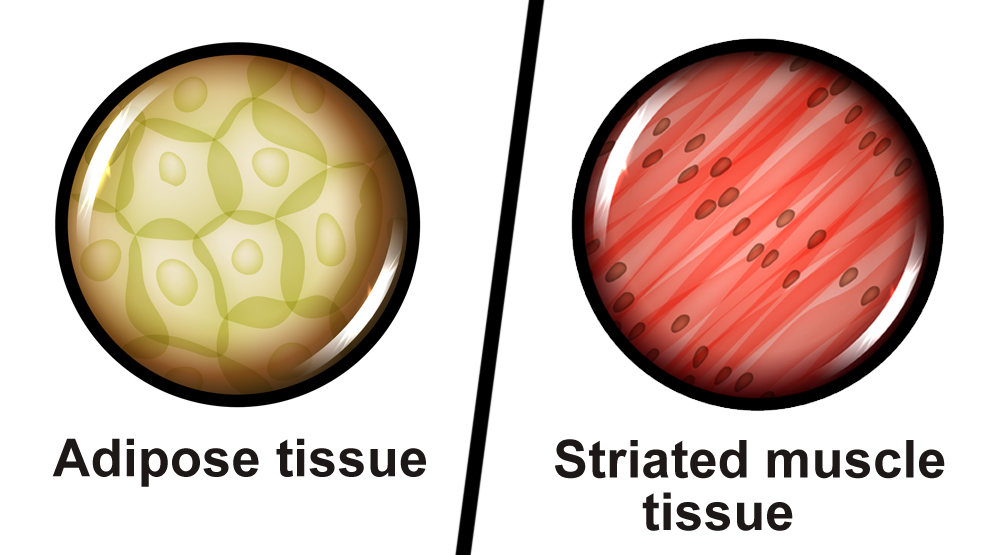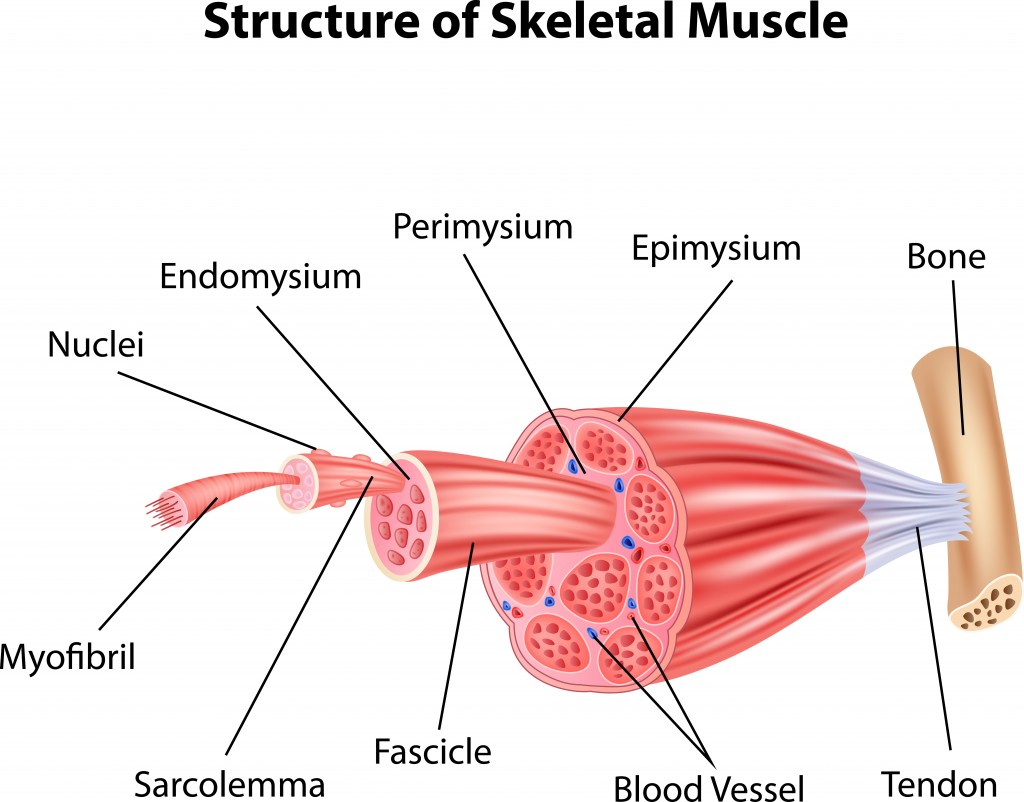Fat cannot be changed into muscle. Muscles are tissues, while fats are composed of chemicals. Neither can adipose tissue, the tissue that store fat be converted to muscle tissue. Exercising burns fat which releases energy. This energy is used to create more protein in the muscle.
The fitness and health industry is all about getting you in shape. This idea of being ‘in shape’ means shedding all the chub and flab you’ve accumulated from all those pizza delivery nights; it also means building up your muscle! This industry is at an all-time high, raking in 94 billion dollars in annual revenue according to the IHRSA (International Health, Racquet & Sportsclub Association) in their 2019 report.
This fitness craze doesn’t seem to be losing much steam, with people becoming increasingly conscious about their food choices and health. One pillar of this industry is selling the image that, with a little exercise, you can look like Dwayne “The Rock” Johnson too!
Achieving that fit look requires losing fat and gaining muscle. One phrase I often come across on the internet when it comes to getting “ripped” is how to turn your fat into muscle.
However, this is a lie. Period.

Why Can’t You Convert Fat To Muscle?
Fats and muscles are two very different things. Fats can refer to two things—chemicals or actual tissues in the body. The chemical fats, also known as lipids, are a part of the cells in your body. They make up border of the cell called the cell membrane, and are attached to other chemicals.
Muscles, on the other hand, are a type of tissue within the body. Tissues are themselves made of cells which are in turn made of many different chemicals like fats. So, it is impossible to directly convert chemical lipids into muscle tissue.
If one talks about converting the tissues in which fats are stored—adipose tissue—into muscle tissue, that too is impossible. Even though they’re both tissues, the cells in these two tissue types are different. Imagine trying to change a banana into a mango based on the logic that they’re both fruits!

More scientifically, muscle cells are composed of myocytes, whereas adipose tissue is made of adipocytes. Both of these cells are what scientists call “terminally differentiated”. Differentiation is a process by which a cell “chooses” its role in the body. Once cells make this “choice”, they can no longer revert back to their undifferentiated stage.
(Side note: In some cell types of specific animals, scientists have been able to reverse the differentiation of cells, most notably in amphibians. However, scientists haven’t recorded any re-differentiation occurring in humans without external manipulation).
Also Read: Why Are Fats The Preferred Energy Storage Molecule?
So, How Do We Lose Fat And Gain Muscle?
This happens through two separate processes that are mutually exclusive—losing fat by being in a caloric deficit mode and gaining muscle by operating in caloric surplus mode. Although this sounds like a paradox, it’s possible to achieve.
Losing Fat By Being In Caloric Deficit Mode
Being calorie deficient means taking in fewer calories than you’re using. Being calorie deficient forces your body to burn the fats in the body in order to acquire energy rather than glucose.
The body prefers using carbohydrates like glucose and fructose as its main source of energy. Glucose gives faster access to energy in comparison to fats and proteins. Fats, on the other hand, serve as better storage molecules for those times when glucose isn’t available.
Under normal, non-exercise or diet conditions, blood glucose levels will rise after a meal. This is when all the cells have more than enough glucose to get their energy from and even have extra, which they will store as glycogen and fat. After an hour or two, the body will have used up all its available glucose. At this stage, the body will start breaking down its glycogen reserves; once that’s over, it will begin to break down its fat reserves.
When you perform an intense workout, your muscles need more energy than when you’re just lying on the couch. This energy initially comes from the glucose as the muscles break down the glycogen reserves. Once this source is completely depleted, the muscles shift to using fat. In endurance training, the main source of energy for the muscles comes from fats.
Along with the right kind of exercise, your diet also plays a key role in losing fat. The ketogenic, high-fat, low-carbohydrate diet, intermittent fasting and caloric restriction are the most popular and recommended diets for weight loss.
These diets encourage you to take in fewer calories (mainly in the form of carbohydrates). The ketogenic diet is specifically based on turning the age-old and trusted food pyramid on its head, i.e., take in lots of protein and fats, and consume barely any carbs.
Obviously, before making any major dietary change, it’s important to consult with a doctor. A trained health specialist will be able to suggest a diet that is suited for your specific health and fitness needs.

Increasing Muscle By Being In Caloric Surplus Mode
Muscles like biceps, triceps and abdominals are skeletal muscles. These muscles, like any other tissue, when pulled, stretched and worked to the extreme will get injured. This damage to the muscles is repaired by special cells located in the muscle called satellite cells.
These cells are muscle stem cells that divide and merge with the injured muscle fibers. This increases the size of the muscle, a process called muscle hypertrophy.

On its own, though, exercise won’t increase your muscles by much. Diet and the form of energy being supplied to the muscle is equally important. This is where being in a caloric surplus comes into play.
The muscles are composed of lots of protein, which is the primary machinery that makes muscles move—long rope-like filaments of proteins called actin and myosin. Making these proteins requires a lot of energy and a good supply of amino acids—the building blocks of proteins. Eating a diet rich in protein helps with gaining and maintaining increased muscle mass.
That being said, muscle size is dependent on both your genes and your gender. Testosterone, which is found in higher quantities in men than in women, causes muscle growth. That’s why so many athletes and bodybuilders take steroid supplements.
Also Read: We Use Facial Muscles All The Time, So Why Don’t They Build Up Like Other Muscles?
Final Answer?
You can’t convert fat to muscle or vice versa, because you can’t change one tissue type into another. Losing weight by reducing fat and gaining muscle through exercise are two separate—but often simultaneous—processes. Consistent exercising and managing your diet can aid in both these processes. Furthermore, you can’t gain as much muscle as the fat you lost. More realistically, you might lose 5 pounds of fat and gain 1 pound of muscle.
On that note, keep exercising and eating the right kinds of food for your body. You’ll have those abs that you’ve always desired in no time!
How well do you understand the article above!

References (click to expand)
- Phd J. E. H. (2015). Guyton and Hall Textbook of Medical Physiology. Elsevier Health Sciences
- Nelson D. L.,& Cox M. M. (2017). Lehninger Principles of Biochemistry. W. H. Freeman
- How Do Muscles Grow? - The University of New Mexico. The University of New Mexico
- IHRSA Report: Worldwide Health Club Membership Now .... ihrsa.org
